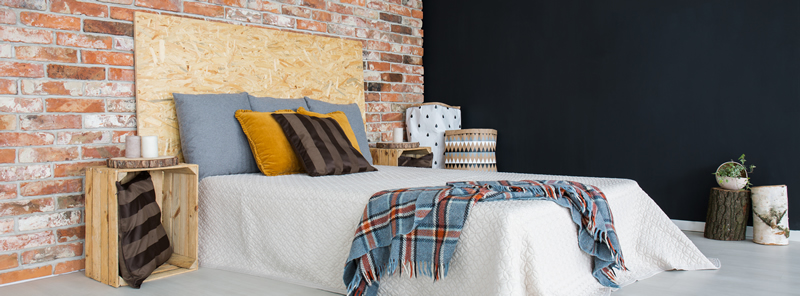The Brick: a beautiful choice
Photo By bialasiewicz on Envato
Research by the National Association of Home Builders and other real estate organizations indicates that more than 60% of homeowners prefer to use brick for their exterior walls. This is not really a surprise. Aesthetically, while brick buildings look imposing and grand along with old-world charm, they are also a symbol of stability and permanence, aspects that any homeowner would seek and hope for in the family.
Brick homes are considered stronger and more durable and according to Marshall and Swift’s residential cost manual, and provide a 6% -10% higher resale value than homes with other exteriors. And for the environment, brick is undoubtedly the best green building option. It also keeps your home naturally cool and acts as a natural sound insulator. Brick exteriors are cheaper to maintain than others, and with a little preventative monitoring, they can serve as very durable exteriors for homes.
Most of the problems associated with brick exteriors revolve around moisture. Since bricks are porous, they can retain water. Some of the signs that brick exteriors may be deteriorating are cracks, white spots, also called efflorescence, and corrosion in cement joints. However, these can be prevented by using the following precautions during construction.
The cement, the material that joins the bricks, must be softer than these. Otherwise it can lead to disintegration. Homeowners should periodically, say every 15-20 years, reinforce cement joints.
The change in temperature / humidity can cause the brick to contract and expand. The installation of expansion and control joints in the wall will allow the movement of the bricks, as well as minimize the stress caused due to these movements. All brick buildings should have small holes, known as weeping holes, along the bottom row that will drain any condensation that forms inside the wall. It is advised to seal the brick with a waterproofing agent to minimize any water infiltration and not to grow any vines on the bricks as they can cause a wedge through the wall and if not monitored it can cause serious structural damage.
During the design of the exterior walls, the infiltration of water / moisture can be restricted by using the “drainage system”. Drain walls involve the construction of a cavity between the exterior brick wall of the front and a back wall formed by bolt of steel or wood. When the water is absorbed into the brick wall, it will drain to the blink and move out of the wall through the weeping holes. There are several colors available for brick wall lovers, including brown, chocolate, copper, or sand. A neutral colored brick layered with other colors is another trend that is gaining popularity.
For more information call Surface Designers.


